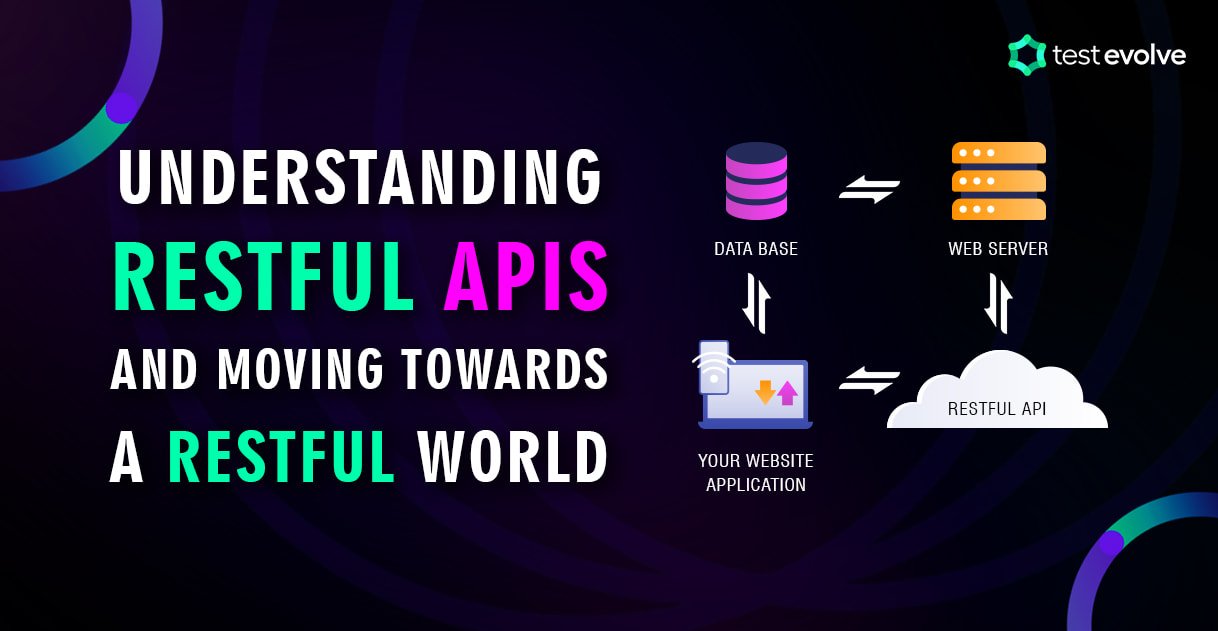Understanding RESTful APIs and Moving Towards a RESTful World
The web is constantly evolving, and so are we! The introduction of RESTful APIs has changed the way we build web applications. RESTful APIs are a set of rules that dictate how information should be exchanged between computers, devices, and applications over the Internet.
Understand that APIs provide a way for programs to interact with each other without human interaction. They provide a standardised way to access data or functionality from one system to another.
If you’re interested in learning more about RESTful APIs, keep on reading!
What do you mean by REST?
REST stands for REpresentational State Transfer and is a style of software architecture for the web. It was invented by Roy Fielding in 2000 when he was working at the University of California and it has seen lots of updates since then.
The RESTful framework is an architectural style in which a client-server system uses HTTP requests to interact with resources on a server, such as web pages and other media types. It is based on the principles of resource identification through URI (Uniform Resource Identifier) and stateless communication over HTTP.
A RESTful system typically has four components:
- A set of resources that are identified with URIs
- A set of operations that can be performed on those resources using HTTP methods (GET, POST, PUT, DELETE)
- A representation format for each resource that is appropriate for use with the chosen media type (e.g., HTML or JSON)
- An application protocol that defines how to control the resource (e.g., an HTTP RESTful API)
RESTful APIs are listed among the most popular types of APIs as developers can take advantage of pre-existing protocols, such as HTTP, without needing to install additional software or libraries. This means lots of flexibility, as data is not tied to resources or methods, allowing for multiple types of calls, different data formats and even structural changes with the correct implementation of hypermedia.
By leveraging the power of REST APIs, developers can create an API that meets the needs of both their own project and their diverse customer base.
When to use REST?
1. Bandwidth limitations
When limited bandwidth and resources are an issue, REST is the best choice for communication. SOAP messages are quite large and require a lot of data, which can be a strain on a network's capacity. Therefore, REST is a more efficient and effective option for these situations.
2. Easy Code
When selecting a web service solution, ease of coding is an important requirement to consider. REST services are known to be much simpler to code and implement than SOAP services, making them a great choice for those who need a quick solution. With REST, you can be sure you are getting an efficient and straightforward coding experience.
3. It’s cacheable!
Using a cache can be a great way to reduce the number of queries made to the server and improve the performance of your application. By keeping the most frequently asked queries in a temporary state, you can ensure that the client requests are served quickly and efficiently.
Whenever a client requests a resource, the first cache is checked to see if there are any available resources. If so, the request does not need to be sent to the server, resulting in a faster response time. Implementing a cache can help you save time and resources, so it is definitely worth considering.
What are the Advantages of Using a RestAPI?
The use of a REST API offers many advantages that can be beneficial for businesses. It is a cost-effective solution that saves time and money, as it can reduce code complexity. Additionally, it is highly scalable, meaning that it can easily accommodate the increasing demands of businesses.
RESTful APIs are robust and secure, providing reliable performance and protection of data and with this many benefits, they easily become an ideal choice for businesses looking to streamline their operations.
1. Easy to integrate
Integrating with a RESTful API is easy. It is designed to make it simple for developers to access and use. While not every application will be able to automatically use your API, the integration process is as straightforward as possible, which is a feature in itself.
2. Universal use of HTTP
One of the most notable advantages is the use of HTTP communication. This makes it much easier to integrate, as it utilises universal web standards. Outputting JSON or ATOMPub provides the ability for applications written in any language to process the response from the API.
3. Super scalable
The use of a REST API provides many advantages, particularly when it comes to scalability. Stateless communication and a replicated repository make it easier to scale up an existing website when compared to other methods such as SOAP. This makes REST APIs an ideal choice for those looking to expand their website or application.
4. Autonomy
The REST protocol provides developers with a great degree of independence. It allows for autonomous development across different sections of a project, as well as the ability to adapt the REST API to different operational syntaxes and platforms. This flexibility allows for testing in various contexts throughout the development process, making it a great choice for projects that require a lot of customisation.
5. Consistent Interface
It is essential to adhere to the same standards when developing a REST API to avoid discrepancies. This interface serves as an agreement between the client and the service and is used by all REST APIs. Having a consistent interface is very beneficial as it allows developers to have a unified understanding of how to interact with each other’s APIs. This leads to a more productive development process as developers can communicate using the same language and standards when utilising APIs.
6. Layered System
The RESTful system is designed to be highly layered, encouraging developers to create components that are easily and independently upgradable. This layered system ensures that each component of the REST-enabled system has no access to any other components other than the one with which it communicates. This means that a client connecting to an intermediary component does not know which other components it will be engaging with later. RESTful APIs are platform-independent, ensuring great flexibility for applications developed using this API.
Also read:- REST API Testing Strategy
REST > SOAP
REST offers many advantages over SOAP, such as not needing clients to know the operation semantics beforehand, not needing to use different ports for different types of notifications and being able to handle many resources with fewer operations.
REST is usually simple to build and adapt, uses fewer resources, creates process instances explicitly, and allows clients to have a generic ‘listener’ interface for notifications. All of these advantages make REST a more efficient and user-friendly option than SOAP.



